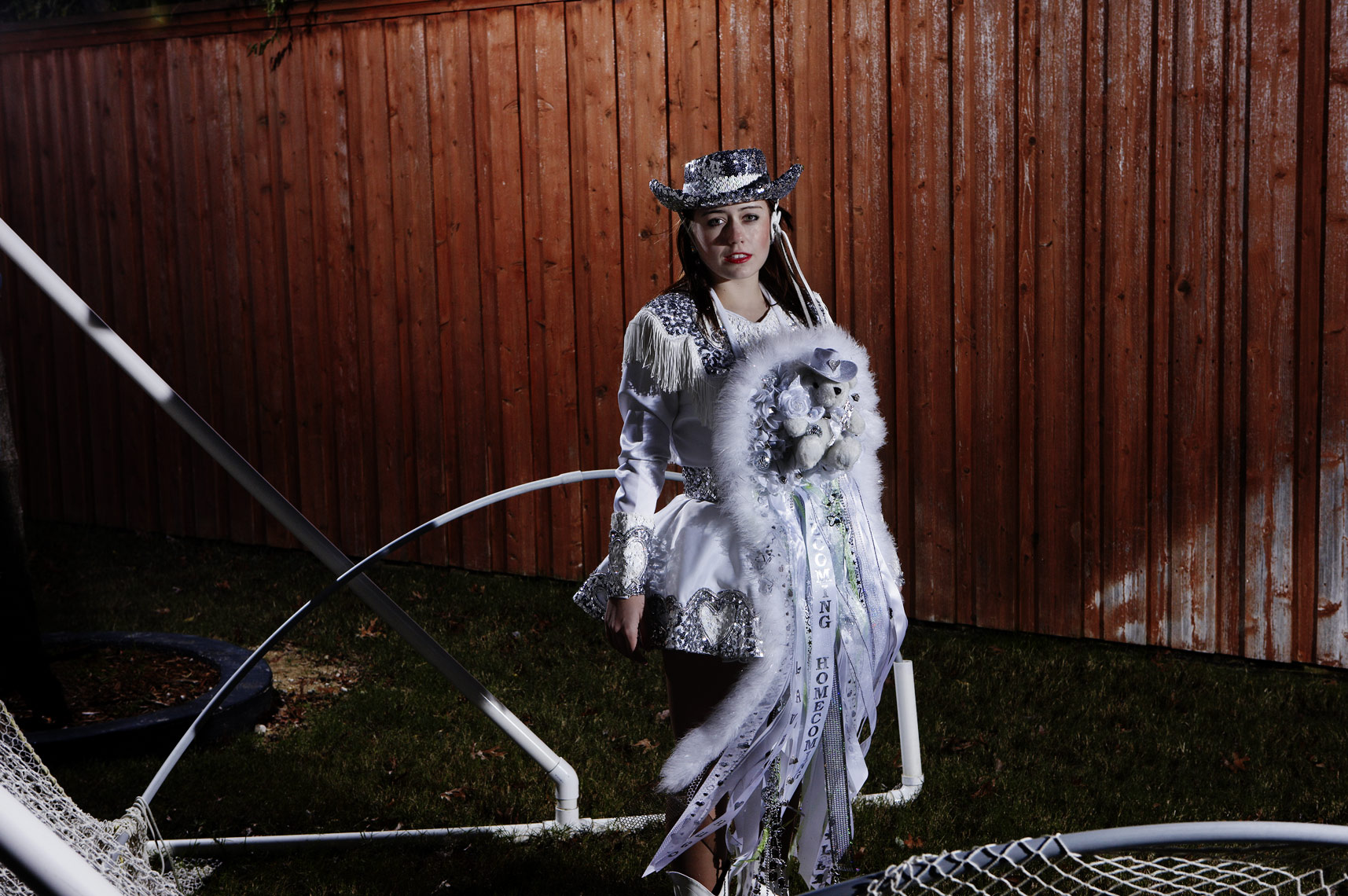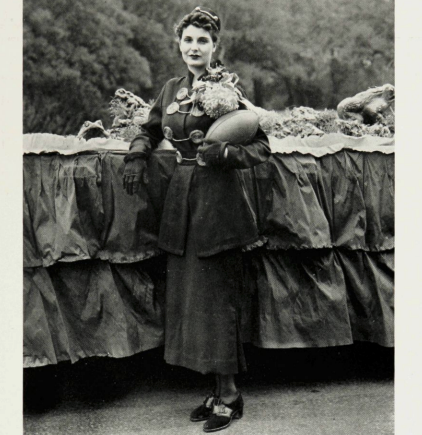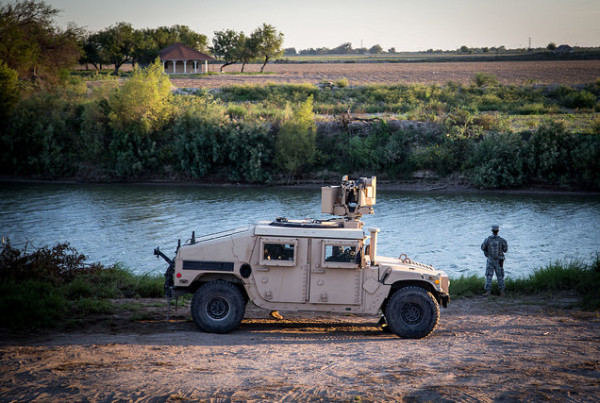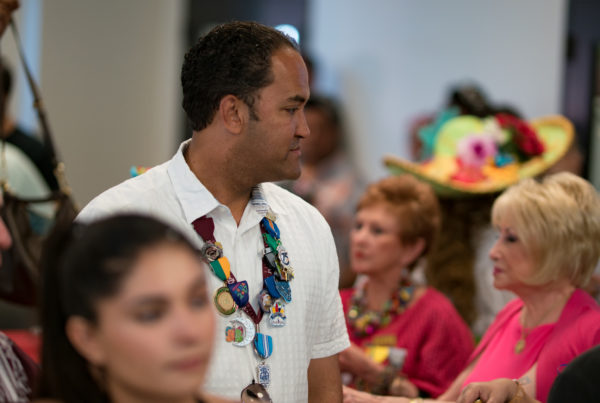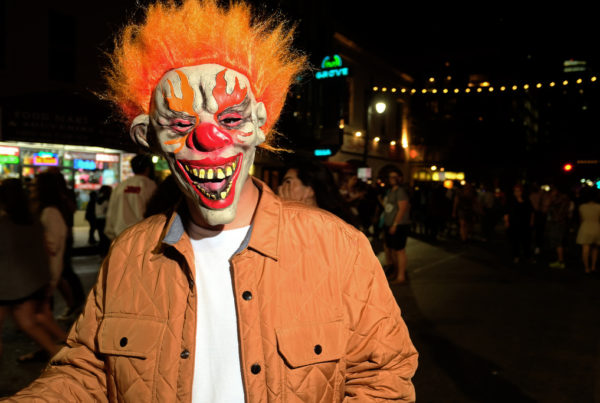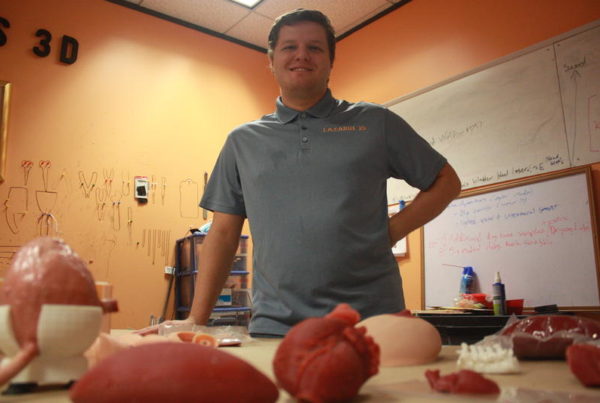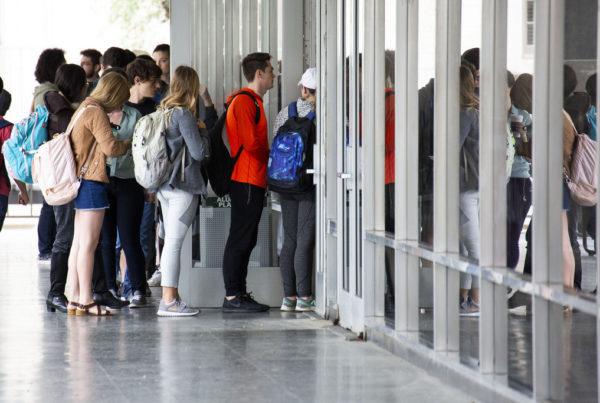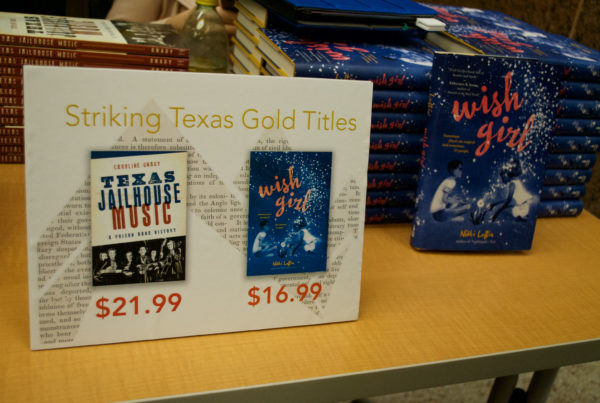First, to make sure we’re all on the same page, homecoming mums are something that vaguely resemble a chrysanthemum corsage. From this fluffy centerpiece comes a stream of decorations: ribbons, braids, trinkets, pennants, teddy bears, Christmas lights – the gaudier and bigger the better. Giving a mum or a garter – that’s the smaller version boys wear on their arms – to your homecoming date is a uniquely Texas tradition. It is the type of thing that, when presented to non-Texans, typically elicits this kind of response:
“Oh my gosh, I just learned what they are! But they’re insane!”
That’s Claire McInerny, she’s an education reporter at KUT in Austin, and a native Kansan. Since this is her first homecoming season in Texas, I wanted to get her thoughts on the tradition.
“I mean, I do want to know what is the origin story of these,” McInerny says.
In my experience, mums are just part of living in Texas; just like the tide goes in and out, so do Texas high schoolers wear mums in the fall. But I wanted to know how, when and why the tradition started. I wanted to find “patient zero” for mums – to pinpoint the exact origin story.
I decided to start with the mums themselves, so I went to the source: a store in the Dallas suburb of Plano called The Mum Shop. It’s a mum mecca, filled floor to ceiling with whatever you need to make one. It was busy on the weekend afternoon I visited, filled mostly with moms and daughters like Toni and Devyn Weber. Devyn is a senior at Plano East High School, so this mum would be her last. She and her mom were planning accordingly.
“We’re going huge. So, the first year was one mum, second year was two mums, last year we did three, and this year we have a 12-inch with like four around it, so it’s huge. It’s going to cover …” Toni says, and then Devyn interrupts her: “The whole torso is – what we’re going for is to cover the whole torso.”
Toni grew up in Texas, too, so I asked her if she knew why we do this.
“So, if I remember the story correctly, it was either ‘40s or ‘50s, and they did an actual chrysanthemum flower, and then it just kinda took on its own life after that,” she says.
The synthetic mums are actually a fairly new development. For most of the mums’ history, real chrysanthemums have been the norm. It’s not totally clear why it started with the chrysanthemum and not some other flower, but Scott Sosebee, an associate professor of history at Stephen F. Austin State University, has a theory.
“You’re talking about – when this gets started, you’re talking about the Depression. Therefore, you’re not going to have the means to buy these things quite often; would have been things that people grew. Chrysanthemums were a common flower, particularly in east Texas during the ‘30s. Almost everybody had chrysanthemums, they were easy to grow. They still are,” Sosebee says.
I spoke to some florists about this, and it seems that the switch from real flowers to fake ones was a matter of demand. Real mums die and wither away; synthetic mums don’t. When given the choice, high schoolers opted for the keepsake that would last forever. The transition seems to have happened in the early 1990s, and an exponential expansion of ribbons and trinkets followed.
But I wondered about their link to homecoming itself. Several universities claim the first homecoming happened on their campus around 1910, one of which is Baylor University. So, I thought, perhaps, the link between mums and homecoming could be hiding somewhere in Waco. Luckily, all of Baylor’s yearbooks are digitized, so I started browsing through them. Book by book, I looked, through the 1910s, the ’20s, up to the ’30s, with nary a mum in sight. As I wondered which would go first, my mouse or my clicker finger, finally I found her: the 1936 Baylor homecoming queen, a junior named Marguerite Joyce. In the yearbook photo, she’s leaning up against a float, wearing a jacket with enormous buttons and holding a football to her body like a running back. Just above the football, pinned to the upper-left side of the jacket, is a large chrysanthemum topped with a ribbon tied in a bow. Marguerite doesn’t look all that happy to be wearing it – you couldn’t call her expression a frown, but it certainly doesn’t resemble the joy one might associate with a homecoming queen these days. But I was happy enough for the both of us to find a clue.
But my satisfaction didn’t last long; I couldn’t find anything else about Marguerite Joyce, much less where she got that mum. She wasn’t even in the 1937 yearbook, which would have been her senior year. It is clear, though, that her photo represented a mum spillover point.
“Slowly in the ’30s, you start seeing images of them wearing a corsage kind of flower and then them growing into traditional mums,” says Chloe Northrop, a history professor at Tarrant County Community College, who put together a museum exhibit on mums in 2016.
Some of the people she interviewed claimed that mums existed even before the mid-1930s
“And I think that’s something that would merit more attention,” Northrop says, meaning concrete proof of them is scarce.
I kept looking – scanning old papers, yearbooks and oral histories for clues about where the mums came from. But to me, whatever happened in the years leading up to that photo of Marguerite Joyce remained a mystery. Eventually, my question changed from where mums came from to why we don’t have this information. Texans love the things we can claim as our own that others cannot; mums fit perfectly in that category.
How had we lost the historical thread? I was perplexed, but others weren’t.
“No, it does not surprise me at all,” says Sosebee, the professor at Stephen F. Austin State University.
He says there’s all sorts of traditions whose origins we’ve just lost.
“It sounds like you’re chasing Ahab’s whale here a bit, huh?” Sosebee says.
It did feel that way, and it felt like I’d failed, too. But then I talked to Nancy Newberry.
“I don’t think you’re the only one,” she says.


